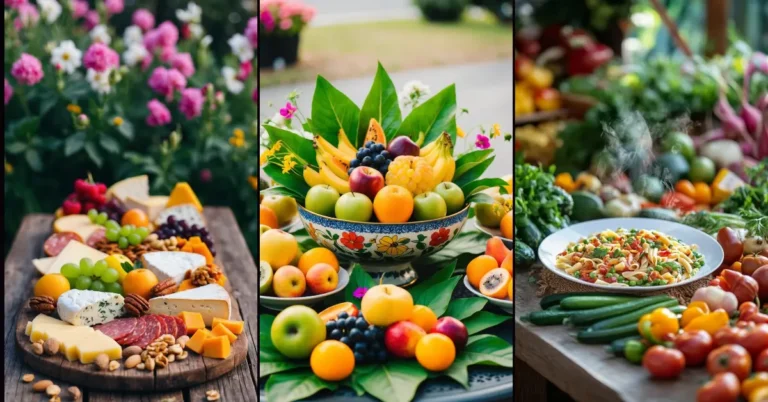12 Rustic Fence Ideas: To Warm Up Your Outdoor Space
Thinking about adding a fence to your yard? Going rustic can really warm things up and make everything feel a bit more natural.
Rustic fences fit all sorts of homes and gardens. They add character without being fussy.
There are plenty of simple, charming rustic fence ideas out there, no matter your budget or taste. Whether you’re into the classic look or want something a little quirky, you’ll find options that make your outdoor area feel inviting.
1) Classic Four-Board Wooden Fence

You really can’t beat a four-board wooden fence for that classic, rustic vibe. It’s sturdy, straightforward, and just feels right in any yard.
This style marks boundaries without blocking the view. Natural wood tones help it blend in, and you’ll find loads of inspiration on sites with rustic fence ideas.
2) Two-Tone Traditional Rustic Fence
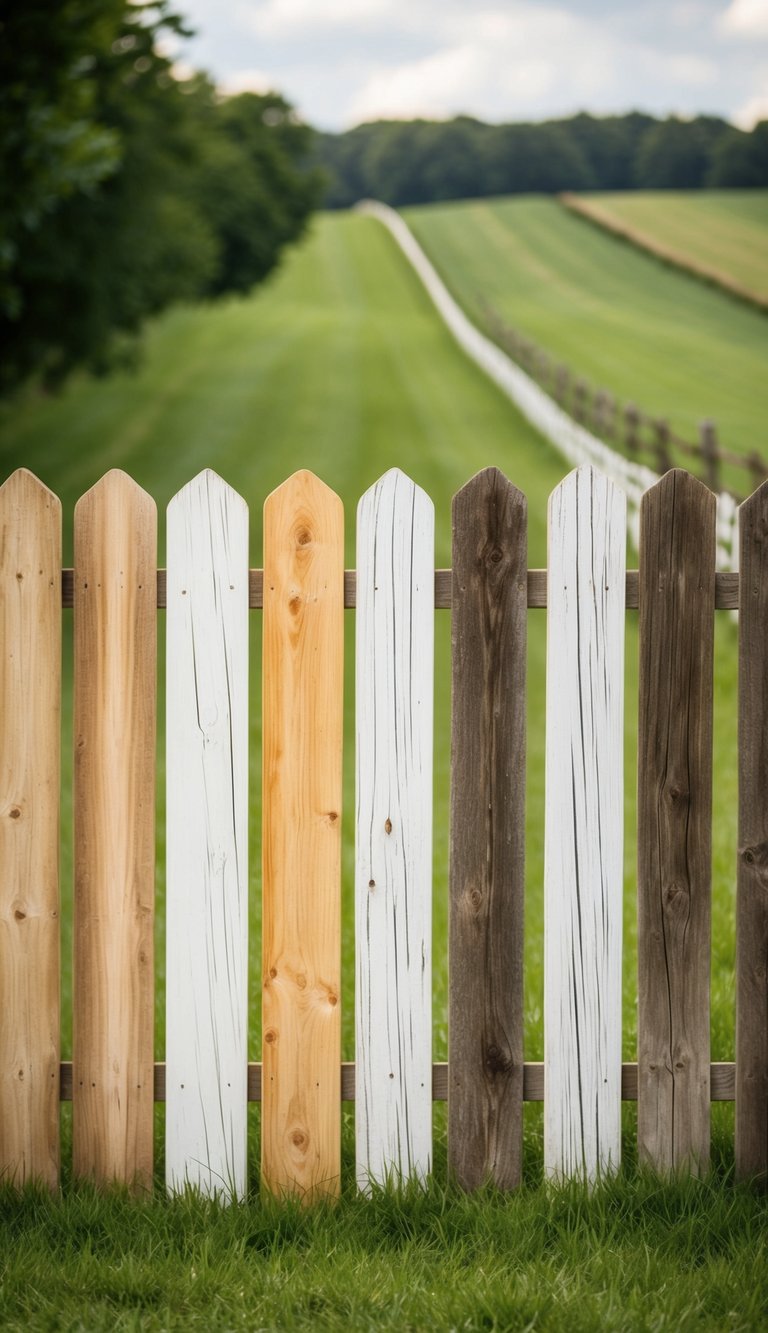
Mixing two wood colors? It’s such a simple way to make your fence pop. You get depth and interest without a lot of fuss.
Try staining some boards and leaving others natural for a balanced look. There’s no shortage of two-tone fence ideas out there if you want to play around.
3) Grand Entrance Curved Fence
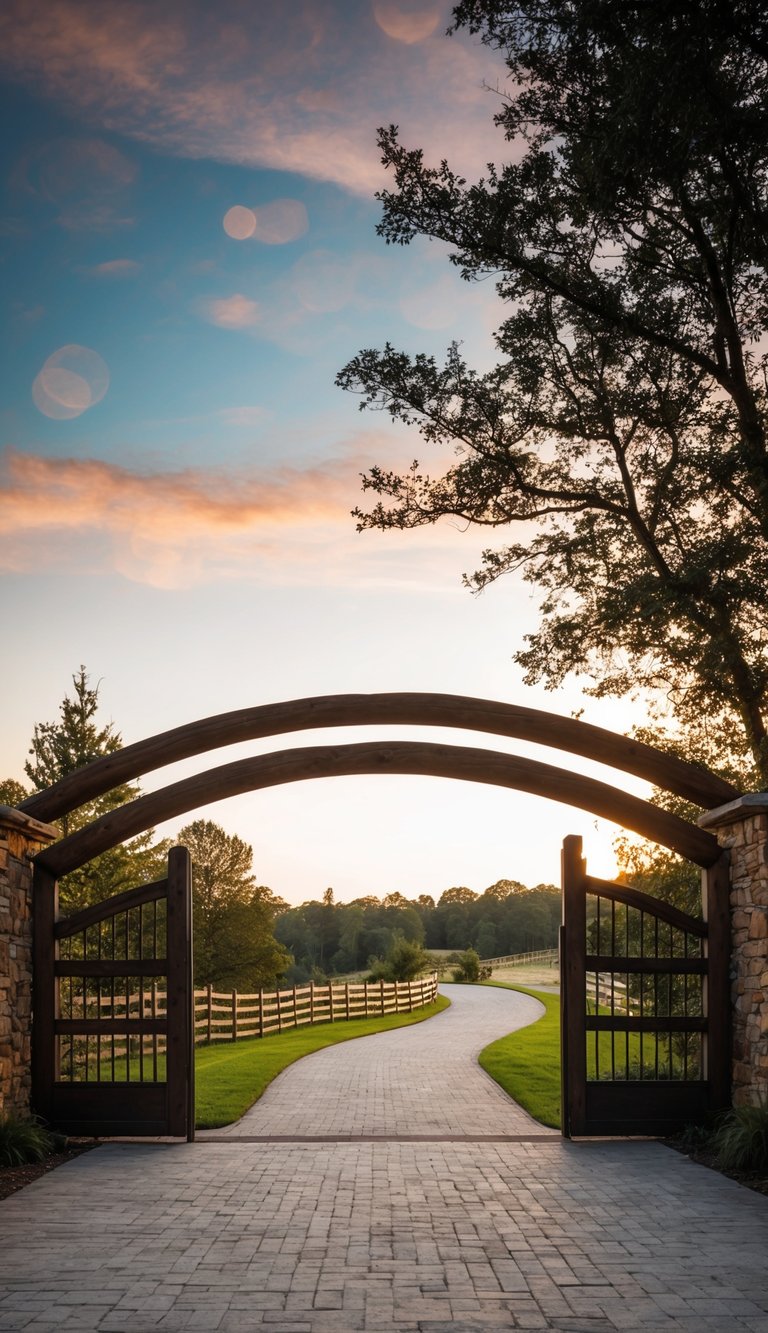
A curved fence at your entrance really softens things up. It’s a nice break from all those straight lines.
Rustic wood makes the curve feel welcoming. Guests will naturally follow it right to your door.
4) Farmhouse Style Picket Fence
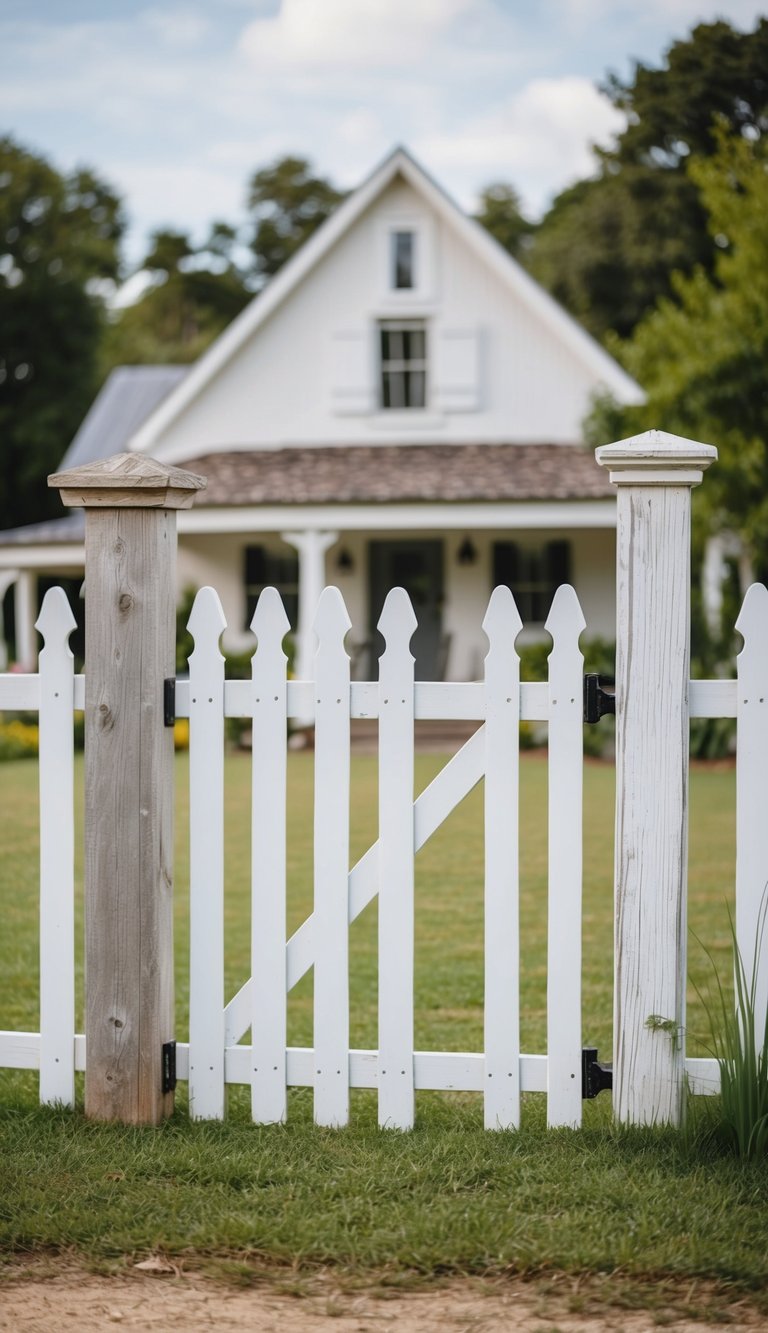
A farmhouse picket fence gives your yard instant charm. Go for natural wood and keep the design simple.
This style isn’t expensive and works with almost any garden. If you want it to feel really authentic, check out farmhouse fence tips for a little extra inspiration.
5) Reclaimed Wood Post and Rail Fence

Reclaimed wood post and rail fences just ooze character. The weathered boards fit right in with rustic landscapes.
They’re sturdy but don’t block your view. Plus, using reclaimed wood is a solid eco-friendly move. Peek at reclaimed wood garden fences for more ideas.
6) Split Rail Fence with Wire Mesh
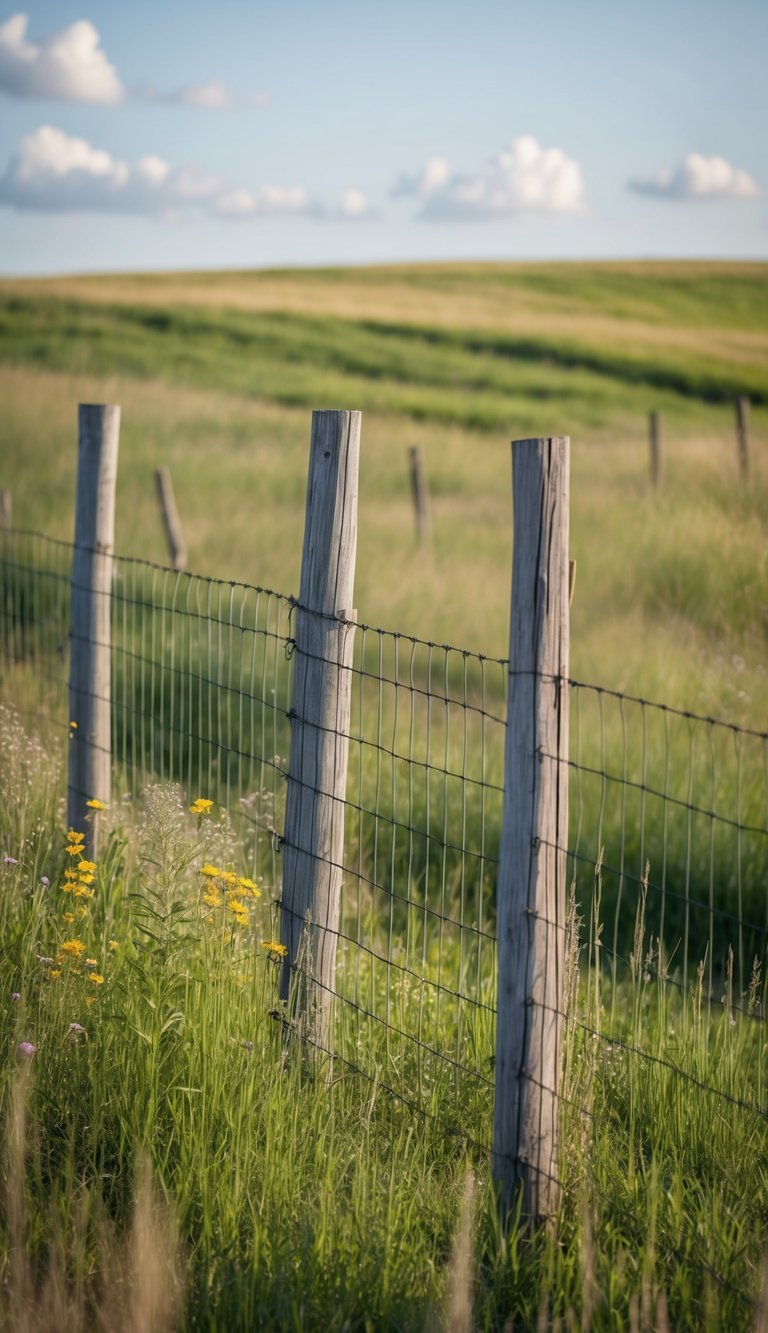
Need a rustic look but want to keep critters in (or out)? Split rail with wire mesh is the way to go.
It’s classic and secure. You can go with two or three rails, depending on your style. More ideas here: split rail fence with wire mesh.
7) Natural Branch Fence
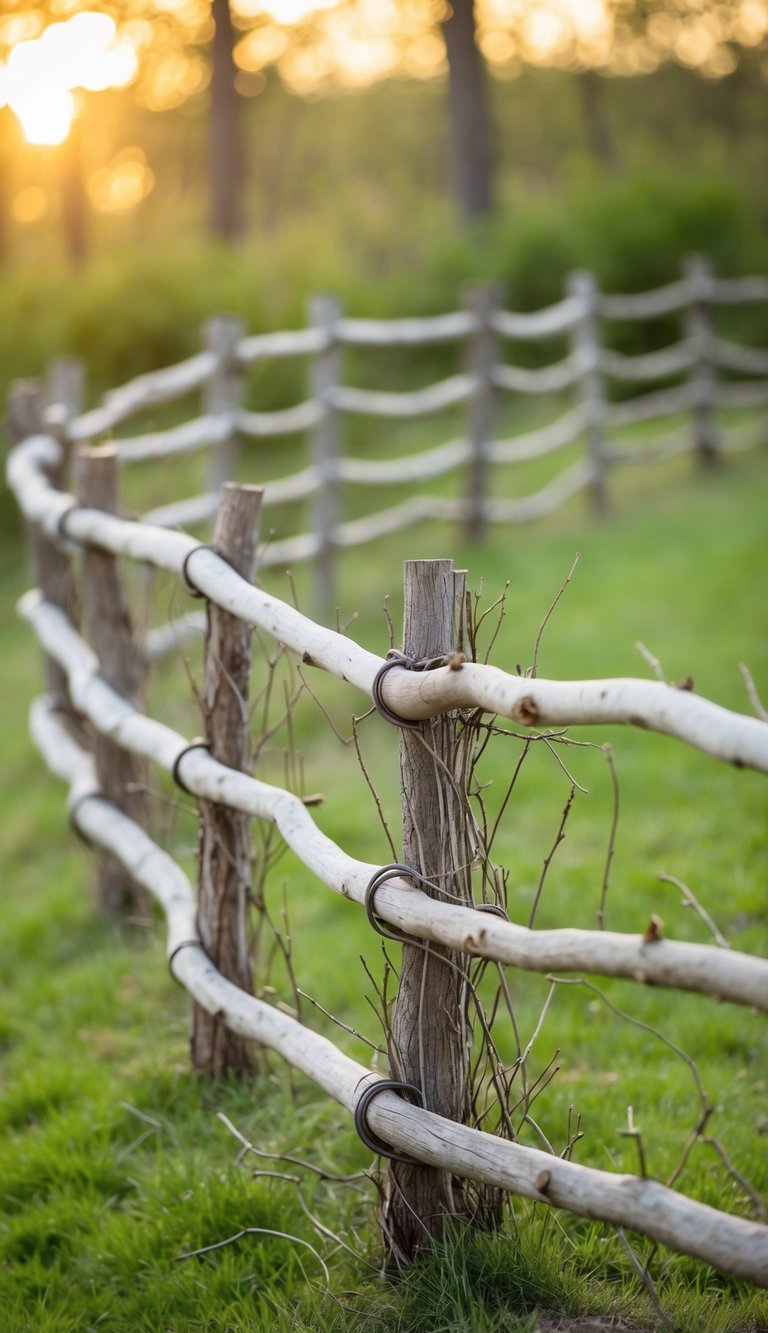
Building with branches gives you a fence that feels like it grew right there. It’s organic and blends in with the garden.
Use willow or other bendy branches and weave them around stakes. It’s surprisingly sturdy and easy to DIY. Plus, it’s eco-friendly. For more, check out creative tree branch fences.
8) Rustic Steel Board Fence
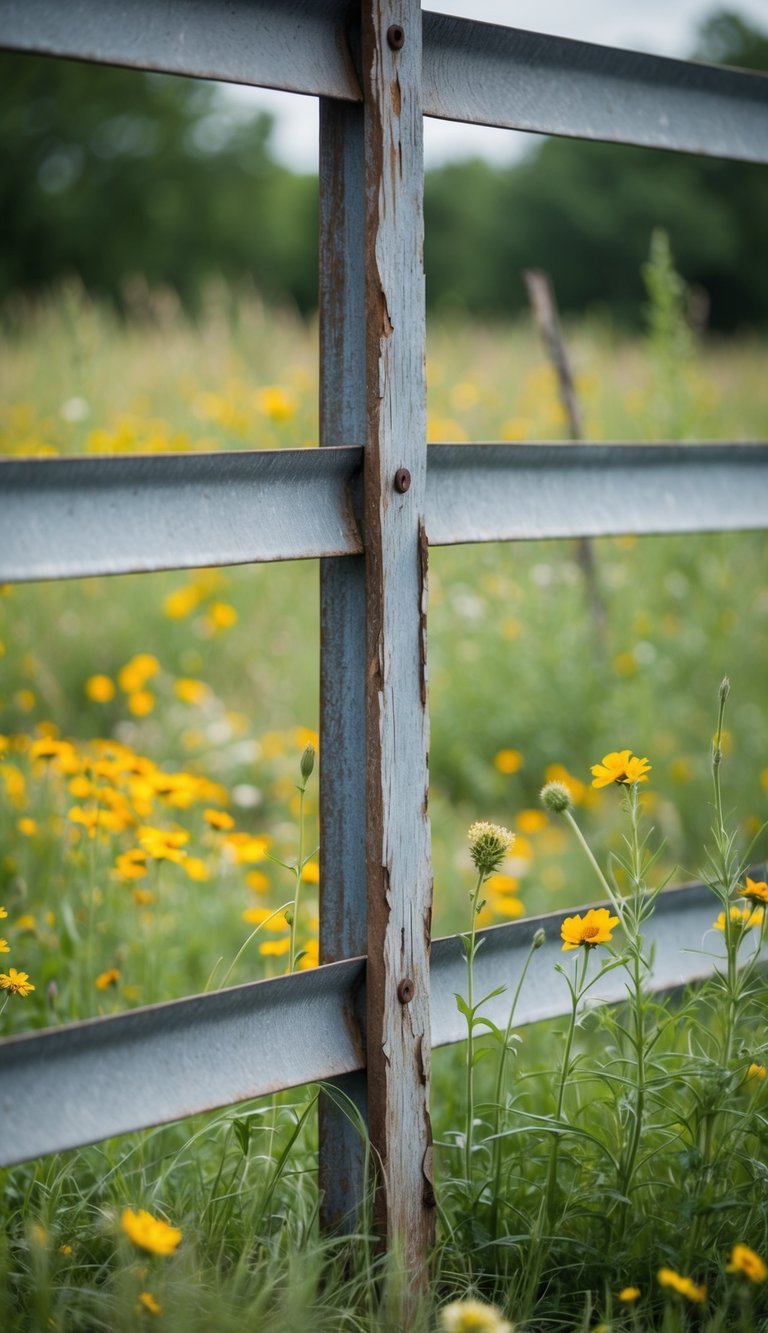
If you want something tough but still rustic, try a steel board fence. It’s got that metal-meets-wood vibe.
Super low maintenance, too. Works for farms or homes that want rustic style without a lot of work. Details here.
9) Wood and Stone Combo Fence
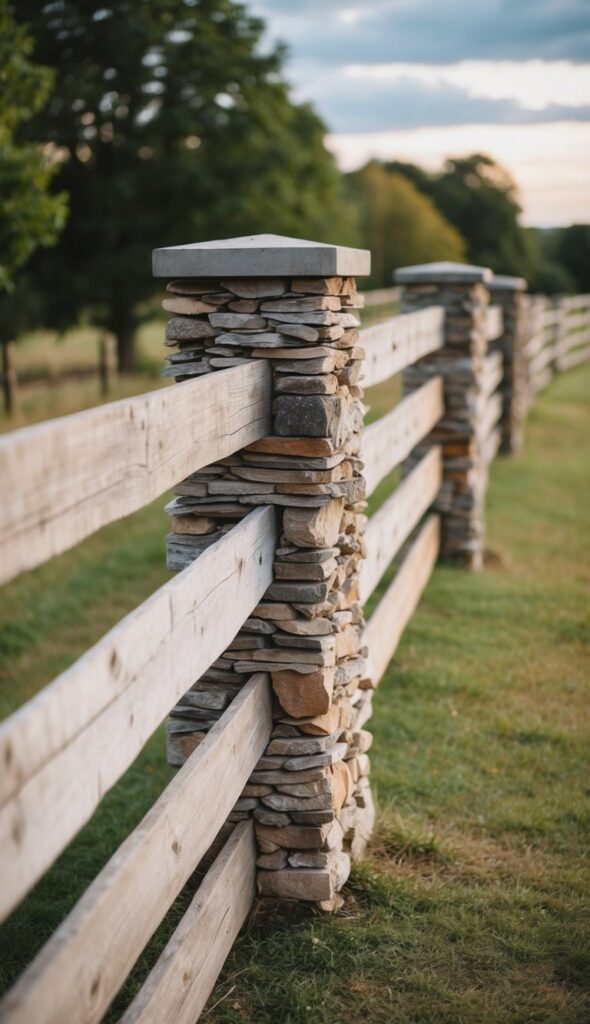
Mixing wood and stone gives you the best of both worlds. Stone posts feel solid, while wooden rails keep things warm and welcoming.
This combo looks great in gardens where you want a bit of nature and some extra durability. Find more wood and stone fences if you’re curious.
10) Tall Privacy Fence with Concrete Footings

Want privacy? A tall fence with concrete footings will stay put, even in rough weather.
It’s a good pick if you’re aiming for a quiet, sheltered space. You can DIY with pre-made panels and set the posts in concrete. Here’s a bit more about this method: link.
11) Handcrafted Wooden Garden Gate
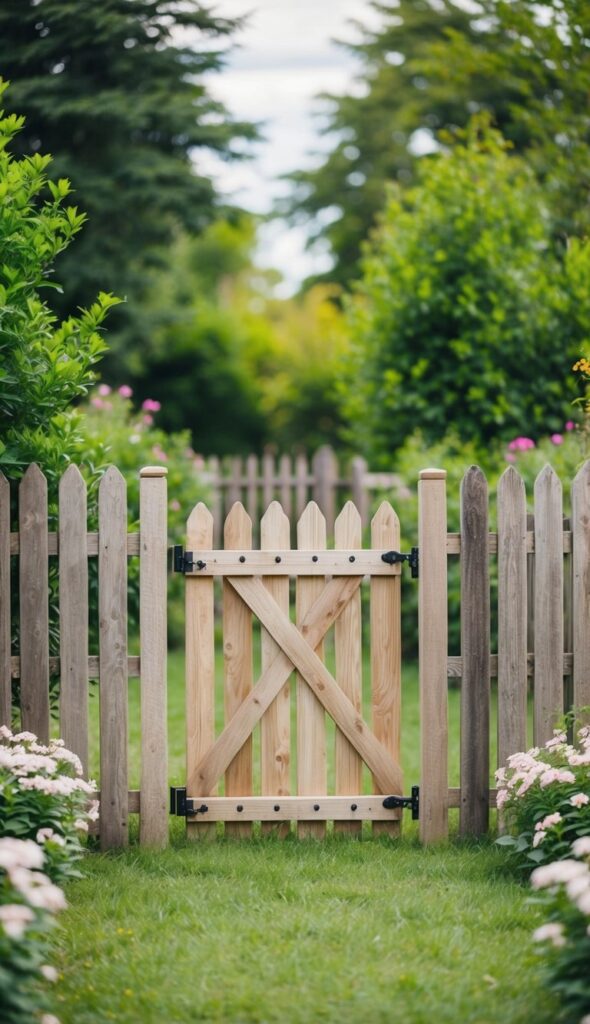
A handcrafted wooden gate just feels special. You can keep it simple or go wild with details—it’s your call.
Natural wood keeps things warm and homey. Just remember, a little regular care goes a long way. If you’re looking for ideas, check out some crafted gates for inspiration.
12) Weathered Gray Wood Fence
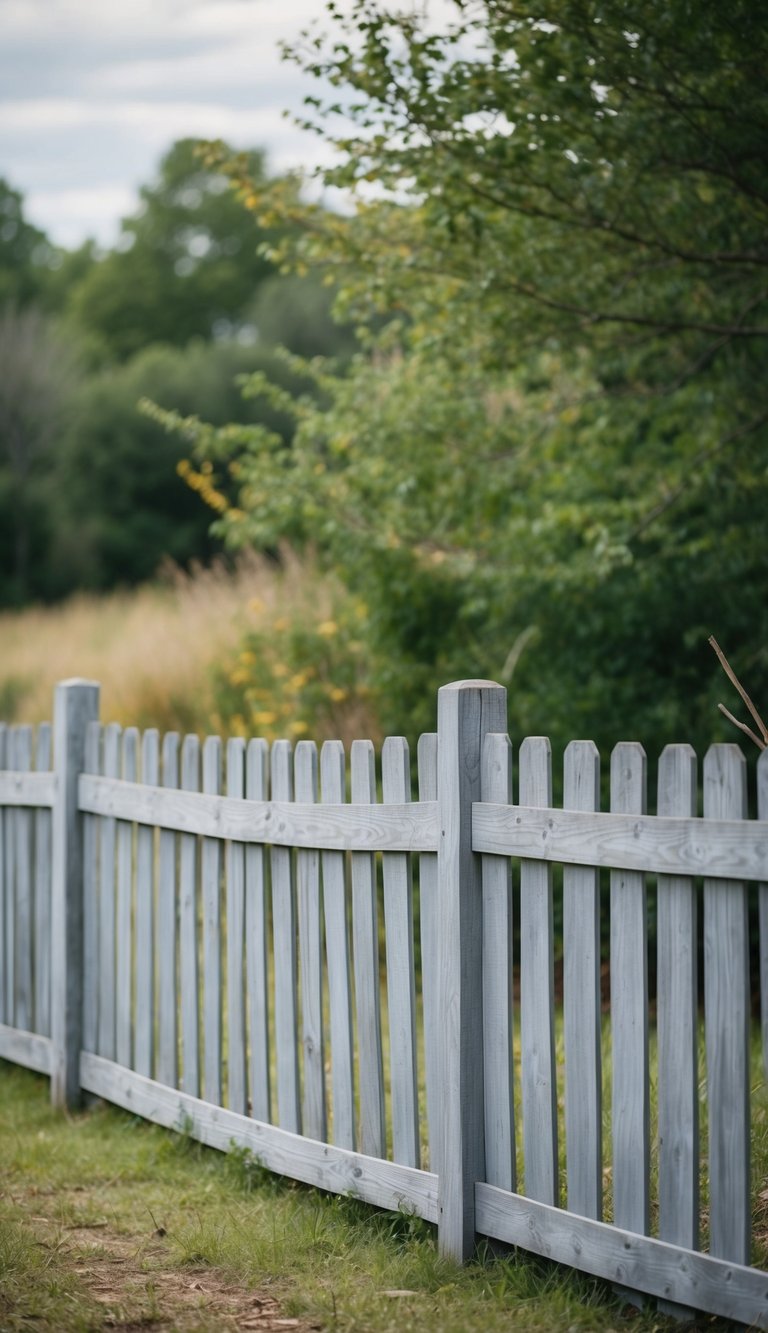
Want that aged, lived-in look? Go for weathered gray wood.
Letting wood age naturally brings out this color, and it fits right in with rustic gardens. See more gray wood fence landscaping for inspiration.
Choosing Materials for Rustic Fences
Picking materials? Think about how tough they are, how they look, and how much work you want to put in. The right stuff helps your fence blend in or stand out, depending on your mood.
Wood Types and Finishes
Wood’s the go-to for rustic fences—no surprise there. Cedar is a favorite because it shrugs off rot and bugs. Pine and spruce are cheaper, but need a good finish to last.
You can stain wood for a natural look, or paint it if you’re feeling bold. Paint might peel, though, so stains or letting the wood weather can be easier. Rough-cut or reclaimed wood? That’s extra rustic, with all those knots and quirks.
Stone and Metal Accents
Stone and metal add some muscle and texture. Stone posts look rugged and anchor your fence.
Metal’s handy for gates or wire panels. Wrought iron or rusted steel give a vintage edge. Just make sure it’s treated so it doesn’t rust out on you.
Mixing materials keeps things interesting. You get a fence that’s tough but still feels like it belongs in the landscape. If you’re curious, check out more rustic fence ideas.
Maintaining Your Rustic Fence
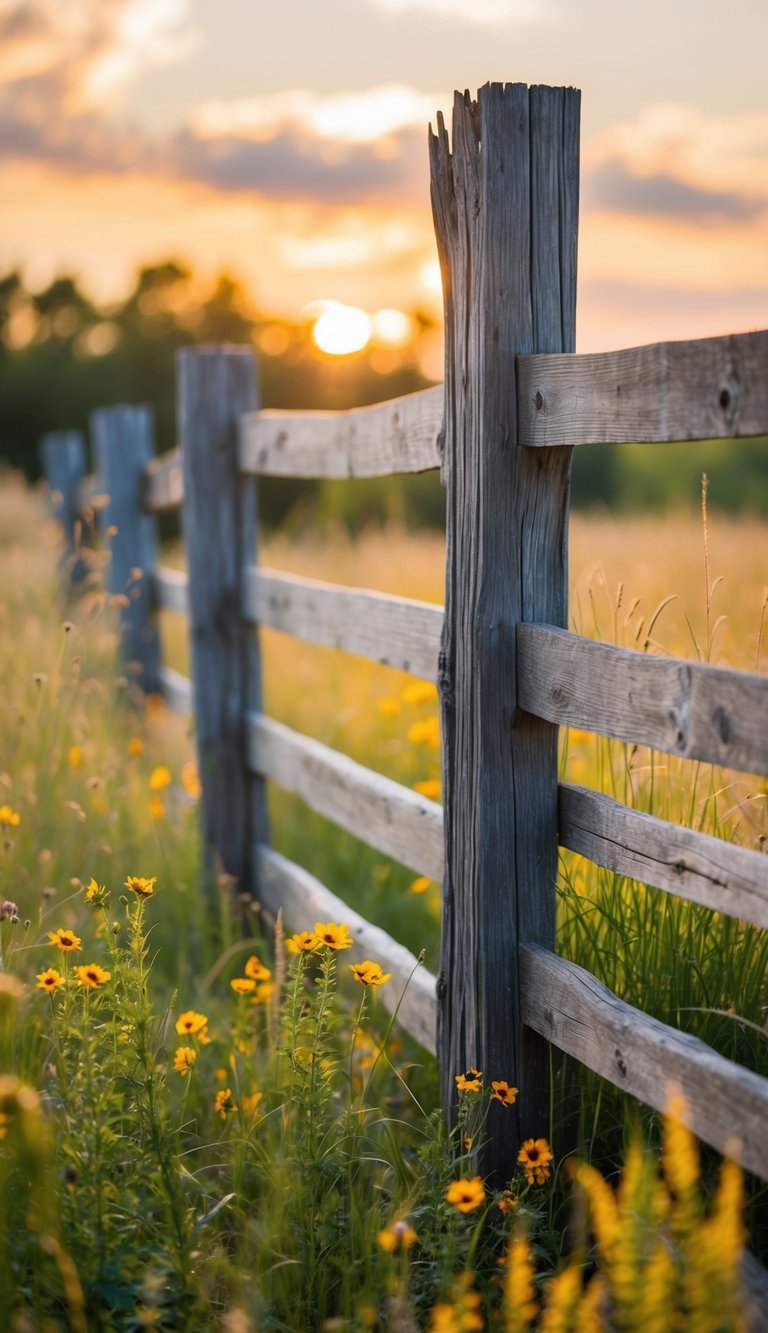
Want your rustic fence to last? Keep an eye out for weather damage and fix little problems before they grow.
A bit of regular care saves you headaches down the road.
Weatherproofing Tips
Wood fences can rot or warp if you ignore them. Slap on a water-resistant sealant or stain every year or two, and you’re in good shape. Go for products made for outdoor wood.
After storms or heavy snow, check for water pooling. If you spot damp spots, dry them off if you can. Trim back plants and grass so you don’t get mold or mildew.
Wood preservatives are smart for keeping bugs out, especially termites. Use them when you build or during yearly checkups. Paint is fine if you like it, but stains and natural finishes keep that rustic look going strong.
Repair and Longevity
Fixing small problems early can save you from big headaches down the line. Every few months, take a walk along your fence and look for loose boards, rusted nails, or cracked posts.
If you spot something, tighten or swap out the parts right away. When a board starts rotting, just pull it out and put in a fresh piece of wood.
Don’t try to hide damage under paint—trust me, it’ll come back to haunt you. Posts need attention too; if they feel wobbly, adding gravel or concrete at the base can keep them steady.
Take a look at hinges, latches, and gates now and then. Rust or busted hardware here can quickly turn into bigger problems.
Switching to rust-resistant metal for your hardware is a smart move if you want your fence to last. For a little extra durability (and maybe some style points), think about mixing in stone or granite posts.
These materials handle weather like champs and don’t really ask for much maintenance. There’s a handy guide on rustic fence designs with granite posts if you want some inspiration.



